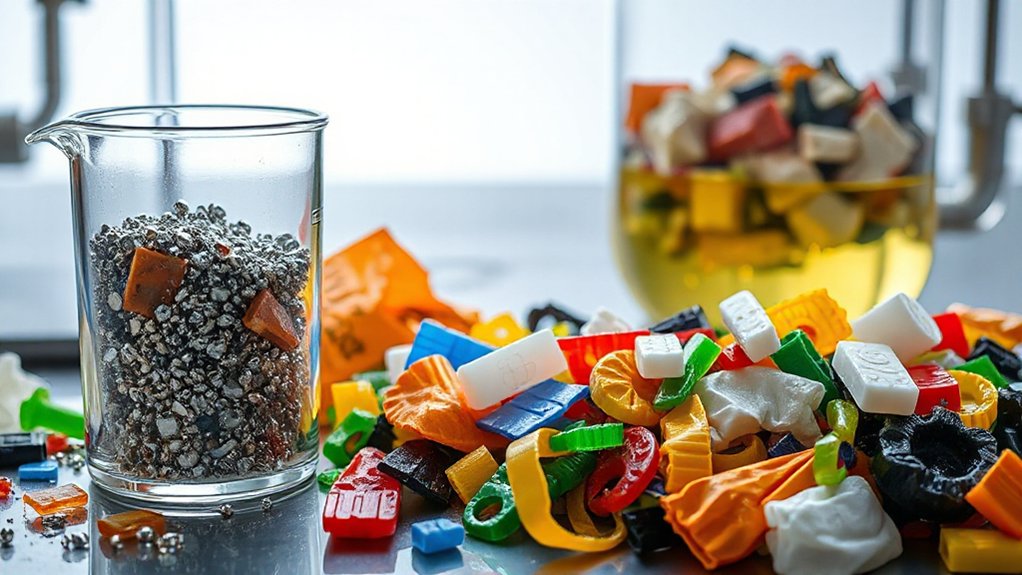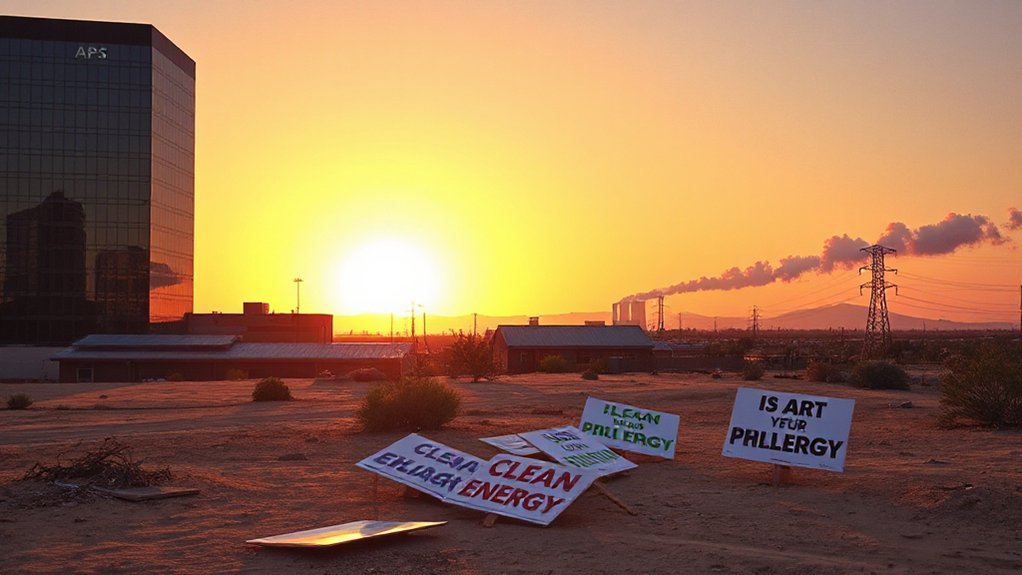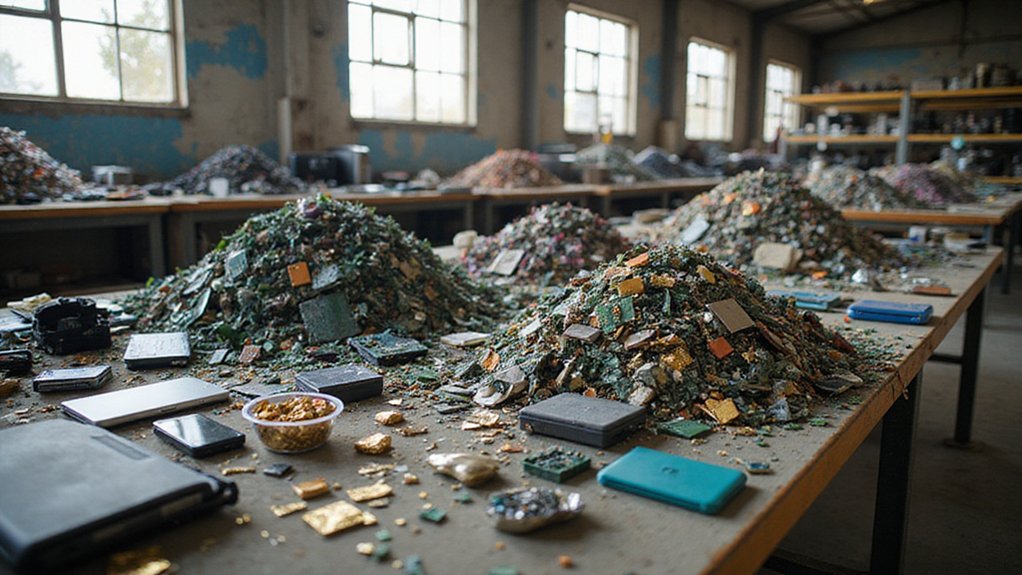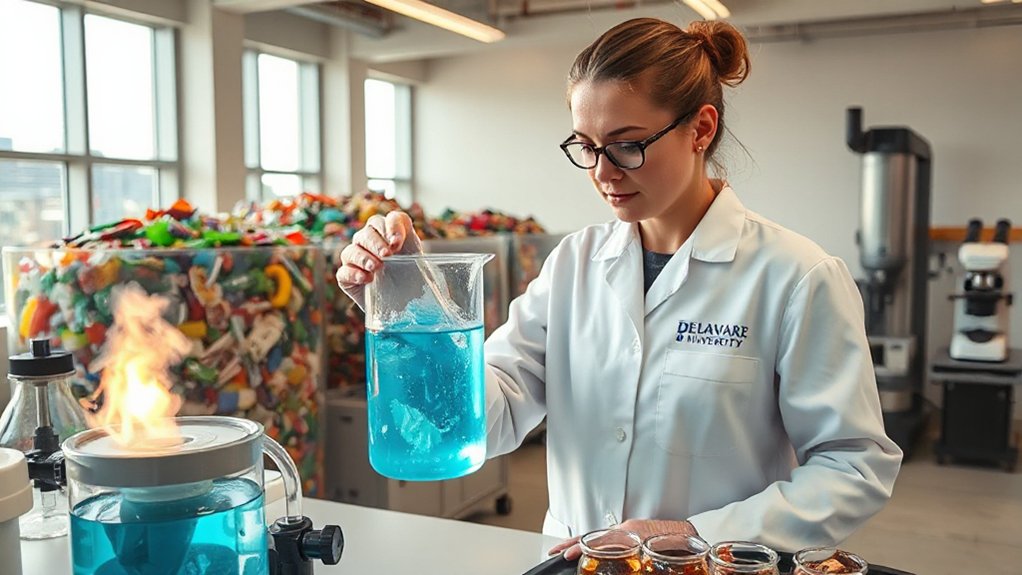While plastic recycling has long faced significant hurdles, recent breakthroughs in catalyst technology and chemical processes are transforming how we handle mixed plastic waste. For decades, recycling facilities have struggled with mixed plastics contaminated with PVC, which rendered entire batches unusable and contributed to the dismal 5% recycling rate in the United States.
Scientists have developed new nickel-based catalysts that can break down polyolefin plastics like polyethylene and polypropylene even when PVC is present. This solves one of the biggest problems in plastic recycling. The catalysts work by transforming solid plastic waste into liquid oils and waxes that can be used to make new products.
Innovative nickel catalysts now convert mixed plastics into valuable oils and waxes, revolutionizing recycling by overcoming PVC contamination.
These catalysts aren’t just effective—they’re also affordable and reusable. This keeps costs down and makes large-scale recycling more practical. The process can handle unsorted plastic waste, eliminating the need for expensive sorting equipment that many recycling centers can’t afford.
The breakthrough comes as researchers explore other innovative approaches like dynamic bonding chemistry. This method creates reversible bonds between normally incompatible polymers, improving the quality of recycled materials. This approach specifically addresses the phase separation issue that has historically made mixed plastic recycling so challenging. Scientists are using artificial intelligence to speed up the design of new polymer compatibilizers.
Other promising technologies include pyrolysis, which converts mixed plastics into fuels in as little as five hours, and enzymatic processes that break down previously unrecyclable plastics. These innovative recycling methods help combat climate change while protecting ecosystem services that contribute trillions to the global economy. Some of these systems can work in small, portable units, bringing recycling capabilities to remote areas. The Northwestern team’s catalyst operates at lower temperatures than traditional methods, requiring 100 degrees less heat while maintaining high efficiency.
The economic and environmental benefits could be substantial. Instead of producing low-value downcycled products, these new methods can create higher-value materials like lubricants and fuels. This shifts recycling from a cost burden to a potentially profitable enterprise.
While some sorting is still necessary for certain plastics, these technologies represent a significant step toward solving the mixed plastic waste crisis that has plagued recycling efforts worldwide.
References
- https://climate.uchicago.edu/entities/reimagining-plastic-recycling-data-driven-dynamic-chemistry-for-upcycling-mixed-waste/
- https://news.northwestern.edu/stories/2025/09/no-sort-plastic-recycling-is-near/
- https://phys.org/news/2025-09-catalyst-plastic-recycling-reality.html
- https://news.northwestern.edu/stories/2025/03/plastic-recycling-gets-a-breath-of-fresh-air/
- https://polynextconf.com/plastic-recycling-innovations-2025/









